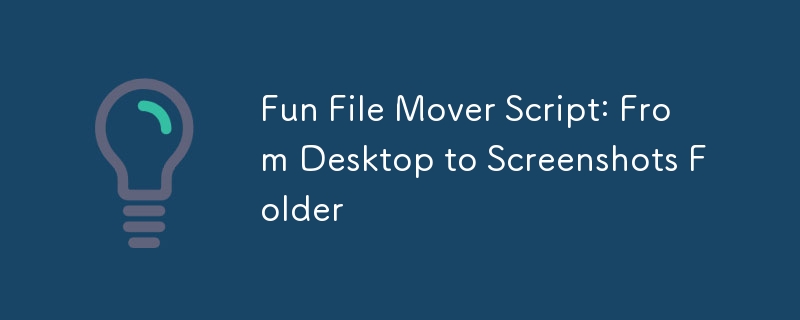

Ever felt overwhelmed by the clutter on your desktop? ?️ If you're like me, your desktop might be a treasure trove of random files. One common culprit? Screenshots! ? They pile up faster than you can say "file management."
So, I decided to tackle this problem with a fun little script. Here’s how you can move all those screenshots (or any specific file type) from your desktop to a designated folder, all while keeping things neat and organized. ?
What You’ll Need
Python installed on your computer.
pathlib library (comes with Python, so no extra installations required!).
The Script
Here's the script that does all the heavy lifting:
import pathlib
Set the paths
desktop = pathlib.Path('/Users/91763/Desktop')
new_path = pathlib.Path('/Users/91763/Desktop/Screenshots')
Create the destination folder if it doesn't exist
new_path.mkdir(exist_ok=True)
Move all PNG files from the desktop to the new folder
for filepath in desktop.iterdir():
if filepath.suffix == '.png':
new_filepath = new_path.joinpath(filepath.name)
filepath.replace(new_filepath)
Breaking It Down
Setting Paths: We start by defining the paths for our desktop and the new folder where we want to move our screenshots.
Creating the Folder: new_path.mkdir(exist_ok=True) ensures that our new folder exists. If it doesn’t, it creates one for us.
Finding and Moving Files: We loop through each file on the desktop using desktop.iterdir(). If the file is a PNG (you can change this to any extension you like!), it gets moved to the new folder.
Why It’s Cool
Automation: No more manually sorting through files.
Organization: Keeps your desktop clean and your screenshots neatly tucked away.
Simplicity: The script is straightforward and easy to adapt for other file types or destinations.
Try this out and watch your desktop transform from a chaotic mess into a model of organization! ? If you have any questions or suggestions, drop them below. Happy coding! ?
The above is the detailed content of Fun File Mover Script: From Desktop to Screenshots Folder. For more information, please follow other related articles on the PHP Chinese website!




